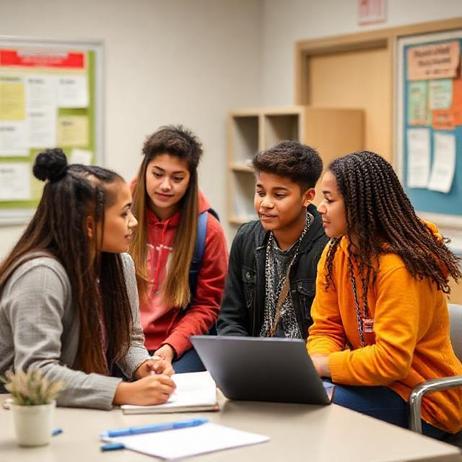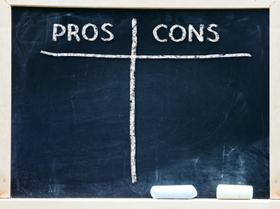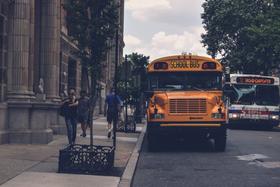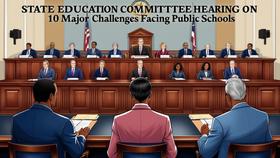Understanding how public schools prepare students for college is essential for families evaluating academic pathways and long-term outcomes. Across the United States, districts continue to expand college-readiness initiatives that blend rigorous coursework, structured advising, workforce exploration, and personalized support. In 2025, many public school systems are refining these strategies to address rising expectations for postsecondary success. This article explains how public schools prepare students for college, highlights best practices, and outlines what families should look for when comparing schools.
Why College Readiness in Public Schools MattersPublic schools serve the majority of American students, which makes effective college preparation a national priority. For families, understanding how public schools prepare students for college provides insight into curriculum quality, teacher expertise, counseling access, and the real-world opportunities available during the high school years.
Several factors drive the need for strong college-readiness systems. College admissions have become more competitive, financial aid rules evolve each year, and students face increasing pressure to build authentic academic and extracurricular portfolios. Schools that understand how public schools prepare students for college often integrate academic, social-emotional, and logistical support.
Key drivers include:
Rising expectations for advanced coursework
Demand for dual-enrollment access
Need for earlier counseling and planning
Expansion of dir="ltr" style="list-style-type: disc; font-size: 11pt; font-family: Arial, sans-serif; color: rgb(0, 0, 0); background-color: transparent; font-variant-numeric: normal; font-variant-east-asian: normal; font-variant-alternates: normal; font-variant-position: normal; font-variant-emoji: normal; vertical-align: baseline; white-space: pre;">
Emphasis on equitable preparation for first-generation students
Districts use a variety of approaches, but several best practices consistently demonstrate how public schools prepare students for college.
Rigorous Academic PathwaysA strong academic foundation remains essential. One defining measure of how public schools prepare students for college is the depth and breadth of available coursework.
Examples of academic supports include:
Honors and Advanced Placement (AP) programs
Dual-enrollment partnerships with community colleges
International Baccalaureate (IB) options
Career and Technical Education pathways aligned with college majors
Authoritative organizations, such as the College Board, provide national guidance on AP course standards. Families can explore AP program structures through the official College Board resource at https://apstudents.collegeboard.org.
When districts offer extensive advanced coursework, students demonstrate stronger skill development, improved academic confidence, and greater exposure to college-level expectations. This is a central component of how public schools prepare students for college.
Counseling and Advising SystemsSchool counseling departments play one of the most visible roles in how public schools prepare students for college. Effective counseling programs begin early, maintain consistent communication, and provide individualized guidance on academic and career trajectories.
Best Practices in CounselingRegular college planning meetings beginning in ninth grade
Course selection aligned to college-readiness benchmarks
Support for FAFSA completion and financial aid literacy
Workshops on essay writing, interviews, and college list development
Family engagement sessions focusing on admissions and affordability
Public schools that understand how public schools prepare students for college invest heavily in counselor training, data analysis, and proactive outreach.
The U.S. Department of Education offers updated guidance each year for financial aid processes, available at https://studentaid.gov. Schools using these tools effectively improve student outcomes.
College and Career Readiness ProgramsStructured readiness programs provide measurable evidence of how public schools prepare students for college. These initiatives blend academic skills with real-world exposure.
Popular Readiness ModelsAVID (Advancement Via Individual Determination)
GEAR UP partnerships
Early College High Schools
Upward Bound and TRIO collaborations
These models emphasize writing, inquiry-based learning, academic behaviors, and college-going mindsets. They offer clear examples of how public schools prepare students for college by scaffolding higher-level skills over multiple years.
Testing, Assessments, and Academic BenchmarkingStandardized testing continues to influence how public schools prepare students for college. While admissions policies vary by institution, readiness assessments help students understand their skill levels and identify areas for improvement.
Common assessments include:
PSAT/NMSQT
SAT and ACT
State college-readiness benchmarks in English and math
Practice assessments used for instructional planning
Districts that understand how public schools prepare students for college often integrate test preparation and skill-building sessions into the regular curriculum. Many also guide families to reputable resources such as ACT’s student support hub at https://www.act.org/content/act/en/products-and-services.html.
Partnerships With Higher Education InstitutionsAnother important dimension of how public schools prepare students for college is establishing meaningful relationships with nearby colleges and universities. These partnerships expand opportunities and expose students to the expectations of postsecondary life.
Common Partnership ElementsDual-credit courses
Summer enrichment programs
Research or mentorship opportunities
Campus visits and immersion experiences
Faculty collaborations to align high school and college curricula
Such collaborations allow families to see firsthand how public schools prepare students for college through coordinated academic and experiential learning.
Equity, Access, and Support for First-Generation StudentsEquity-focused strategies are essential for understanding how public schools prepare students for college. First-generation and historically underserved students often face barriers related to information access, financial literacy, or academic preparedness. Public schools address these gaps through targeted support.
Effective Equity StrategiesDedicated first-generation student programs
Multilingual family engagement events
Data monitoring to identify academic disparities
Tutoring and extended-learning opportunities
Partnerships with community organizations
Schools committed to equitable access demonstrate the fullest picture of how public schools prepare students for college, ensuring that readiness is not limited to a select group.
Social-Emotional Learning and Behavioral SupportCollege success requires resilience, time management, self-advocacy, and emotional regulation. These skills shape how public schools prepare students for college just as strongly as academics.
Districts integrate:
Social-emotional curricula
Peer mentoring programs
Advisory periods
Mental health counseling
Student leadership initiatives
Students who receive consistent SEL support enter college with improved independence and confidence.
Technology and Digital LiteracyAnother marker of how public schools prepare students for college is how effectively they integrate technology. Digital literacy now plays a major role in higher education, from research databases to online learning platforms.
Public schools emphasize:
Research and information literacy
Learning management systems
Digital collaboration tools
Online course supplements
Career exploration platforms
Technology access and training directly influence how public schools prepare students for college, especially in districts prioritizing equitable distribution of devices and broadband.
Summary Table: Key Indicators of College-Ready Public Schools| Practice Area | Indicators of Strong Implementation | How It Supports College Preparation |
|---|---|---|
| Advanced Coursework | AP, IB, dual enrollment, CTE pathways | Builds academic rigor and confidence |
| Counseling | Early guidance, financial aid support | Clarifies college planning steps |
| Readiness Programs | AVID, GEAR UP, Early College | Strengthens skills and mindsets |
| Testing Support | SAT/ACT prep, benchmarking | Identifies strengths and growth areas |
| Equity Initiatives | Targeted programs, tutoring | Expands access for underserved students |
This table highlights measurable features that demonstrate how public schools prepare students for college in consistent, effective ways.
What Families Should Look for in 2025Families evaluating high schools can better understand how public schools prepare students for college by asking targeted questions:
Are AP, IB, and dual-enrollment options widely accessible?
How many counselors are available per student?
Are there structured college-planning systems beginning in ninth grade?
What partnerships exist with local colleges?
How does the school support first-generation learners?
Parents can also visit resources such as Public School Review to compare schools and better understand how public schools prepare students for college in different regions: https://www.publicschoolreview.com.
ConclusionUnderstanding how public schools prepare students for college requires examining multiple dimensions of school practice, from rigorous coursework to counseling, equity, SEL, and partnerships. Public schools across the nation continue to expand these systems, offering students a comprehensive pathway toward postsecondary success.
For families navigating school decisions in 2025, looking closely at these indicators provides a practical roadmap. Public schools that demonstrate a deep commitment to readiness show measurable improvements in student confidence, academic performance, and long-term outcomes. By recognizing how public schools prepare students for college, communities can support structures that help all students thrive.















